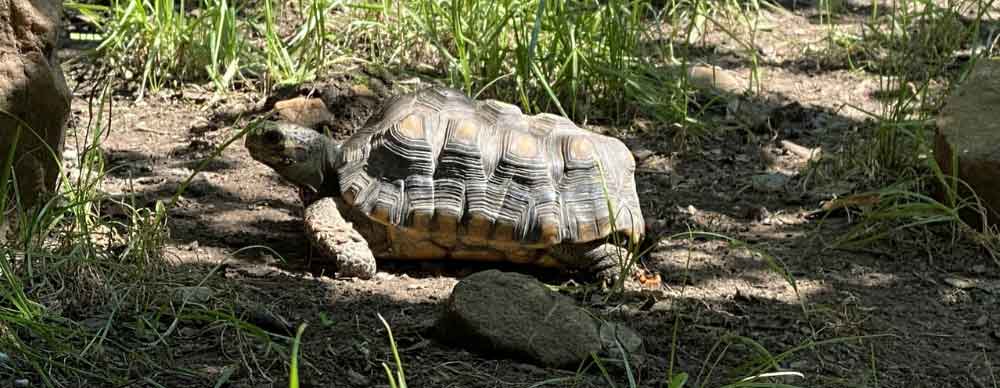Meet Our Animals
The Brandywine Zoo proves that great things do come in small packages. The Zoo features animals from the tropical and temperate areas of North and South America, Asia and Africa. Our animals range from more common species to the highly endangered. All enjoy natural settings and welcome your visit to the zoo. Some animals may be off exhibit during cold weather.
Chelonoidis carbonaria
Red-footed Tortoise

Habitat
Geographic Region & Range
Diet
Physical Description
Red-footed tortoises typically have dark brown to black shells with dark-brown edges and pale-gold middles. Their red markings vary in amount and location and are influenced by geographic location, genetics, and diet. Young tortoises have small distinct areas of yellow or tan coloring surrounding or covering each bump. Bright red marks may appear on the head. The legs and tail often have patches of orange, yellow or red.
Lifespan
Natural Habitat: 50 years
Under Human Care: 50+ years
Threats
Status
What are AZA Zoos doing for
Red-footed Tortoise
Many AZA zoos have red footed tortoises as ambassador animals to educate the public.
Fun Facts
Red-footed tortoises are most active during the day and immediately after rain.
These tortoises are have splatters of red on their feet and yellow on their heads. As males get older, they develop a distinctive hour-glass shape.
When resting, red-footed tortoises barely move. Termites have even built tunnels on top of their carapaces.
When the weather is cool, the tortoises metabolism slows down , enabling them to survive on very little food. A mature tortoise can go for nearly a month on one banana.
